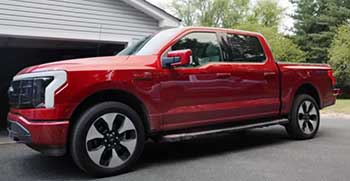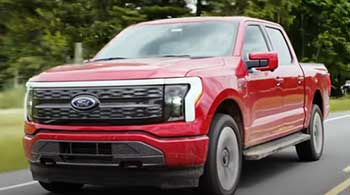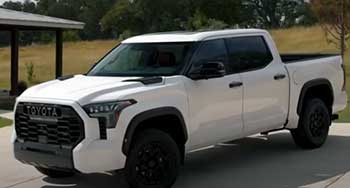
I’ve spent years behind the wheel of pickup trucks, hauling everything from camping gear to construction materials, and I’ve got a soft spot for the Ford F-150 and Toyota Tundra.
Both are legends in the full-size truck world, but which one’s the right fit for you? In this article, I’ll share my firsthand experiences, breaking down the strengths and weaknesses of each truck, comparing their key features, and offering practical maintenance tips.
Whether you’re a contractor, an off-road enthusiast, or just need a reliable daily driver, I’ll help you decide which truck suits your life best.Ford F-150 vs. Toyota Tundra: A Truck Lover’s Tale of Power, Reliability, and Real-World Use
I’ve spent years behind the wheel of pickup trucks, hauling everything from camping gear to construction materials, and I’ve got a soft spot for the Ford F-150 and Toyota Tundra.
Both are legends in the full-size truck world, but which one’s the right fit for you? In this article, I’ll share my firsthand experiences, breaking down the strengths and weaknesses of each truck, comparing their key features, and offering practical maintenance tips.
Whether you’re a contractor, an off-road enthusiast, or just need a reliable daily driver, I’ll help you decide which truck suits your life best.
Comparison Table: Ford F-150 vs. Toyota Tundra
| Feature | Ford F-150 (2025) | Toyota Tundra (2025) |
|---|---|---|
| Base MSRP | $36,965 | $39,675 |
| Standard Engine | 2.7L V6 EcoBoost, 325 hp | 3.4L Twin-Turbo V6, 358 hp |
| Max Towing Capacity | 13,500 lbs | 12,000 lbs |
| Max Payload Capacity | 2,445 lbs | 1,940 lbs |
| Fuel Economy (City/Hwy) | 20/26 MPG (2.7L EcoBoost) | 18/23 MPG (3.4L V6) |
| Hybrid Option | PowerBoost Hybrid (430 hp, 23 MPG combined) | i-FORCE MAX Hybrid (437 hp, 22 MPG combined) |
| Reliability Rating | 3.5/5.0 (RepairPal) | 3.5/5.0 (RepairPal) |
| Warranty | 3 yrs/36,000 mi; 5 yrs/60,000 mi powertrain | 3 yrs/36,000 mi; 5 yrs/60,000 mi powertrain; 8 yrs/100,000 mi hybrid components |
| Infotainment | 12-inch SYNC 4 touchscreen | 8-inch touchscreen (14-inch optional) |
| Off-Road Trims | Tremor, Raptor, Raptor R | TRD Pro |
My Experience With the Ford F-150
I’ve driven a 2017 F-150 Platinum with the 3.5L EcoBoost V6, and more recently, a 2025 F-150 Lariat, and let me tell you, this truck feels like the Swiss Army knife of pickups. It’s been my go-to for everything from towing a trailer loaded with ATVs to cruising through city traffic.
The F-150’s versatility is its biggest draw—whether I’m on a job site or heading out for a weekend adventure, it adapts like a chameleon. The 2025 model’s sleek design, with clean lines and a grille that screams confidence, turns heads wherever I go. Inside, the cabin feels like a tech hub, with a massive 12-inch SYNC 4 touchscreen that’s as intuitive as my smartphone. The seats are plush, especially in the Lariat trim, and the massaging feature? Pure bliss after a long day.
On the road, the F-150’s ride is smooth, almost car-like, thanks to its independent front suspension and lightweight aluminum body. I’ve towed up to 10,000 pounds with the 3.5L EcoBoost, and it didn’t break a sweat, pulling with confidence even on steep inclines.
Off-road, the Raptor trim I tested at a local trail was a beast, eating up rocky terrain with its Fox shocks and 37-inch tires. But it’s not all roses—repairs can sting, and I’ve had to deal with a pesky alternator issue at around 110,000 miles on my older model. Still, the F-150’s configurability, with six engine options and trims from basic workhorse to luxury king, makes it a truck that can be whatever you need it to be.
My Experience With the Toyota Tundra
My time with the Toyota Tundra, particularly the 2023 Limited and 2025 TRD Pro, has been equally memorable but in a different way. The Tundra feels like the reliable friend who’s always there when you need them. Its 2022 redesign brought a bold, aggressive look with a massive grille and sleek LED lights that give it a modern edge.
The cabin is spacious, and the 14-inch infotainment screen (optional on higher trims) is a stunner, though I found it less user-friendly than the F-150’s system. The Tundra’s twin-turbo 3.4L V6 is a powerhouse, and the hybrid i-FORCE MAX I tested in the TRD Pro delivered 437 horsepower with a growl that made me grin.
Driving the Tundra is like piloting a tank—it’s sturdy, with a solid rear axle that’s built for durability but can feel stiff on pavement compared to the F-150’s smoother ride. Off-road, the TRD Pro’s crawl control and skid plates made light work of muddy trails, though it’s not quite as agile as the F-150 Raptor. Towing 11,000 pounds felt effortless, but the Tundra’s fuel economy (around 14 MPG in my real-world tests) left me wincing at the pump.
What stands out most is the Tundra’s reputation for longevity—I’ve met owners with over 250,000 miles and minimal issues, which is hard to beat. It’s a truck that feels like it’ll outlast us all, but its tech and interior refinement lag slightly behind the F-150.
Pros Of the Ford F-150

- Versatile Engine Lineup: The F-150 offers six engines, from the base 2.7L EcoBoost (325 hp) to the monstrous 5.2L supercharged V8 in the Raptor R (720 hp). I love how you can pick an engine tailored to your needs—fuel efficiency, towing, or raw power.
- Best-in-Class Towing and Payload: With a max towing capacity of 13,500 pounds and a payload of 2,445 pounds, the F-150 outmuscles the Tundra. I towed a boat weighing 9,000 pounds, and it felt like a breeze.
- Advanced Technology: The standard 12-inch SYNC 4 touchscreen is crisp and responsive, with wireless Apple CarPlay and Android Auto. Features like BlueCruise hands-free driving (available on higher trims) make highway trips a dream.
Also read: My Thoughts on Ford Edge Vs. Hyundai Tucson.
- Spacious and Luxurious Cabin: The SuperCrew cab offers over 43 inches of rear legroom, and high-end trims like the Limited feel like a luxury SUV with leather, massaging seats, and a panoramic sunroof.
- Off-Road Prowess: The Raptor and Raptor R trims are off-road monsters, with Fox shocks, skid plates, and all-terrain tires. I tackled a rocky trail with the Raptor, and it handled like a rally truck.
- Innovative Features: The Pro Access tailgate swings open like a door for easier bed access, and Pro Power Onboard (up to 7.2 kW) turned my truck into a mobile generator for a campsite power setup.
The F-150’s ability to be everything from a rugged work truck to a high-tech luxury vehicle is what makes it shine. Its towing and payload capacities are unmatched in the class, and the tech keeps you connected and safe. Whether I’m hauling lumber or taking the family on a road trip, the F-150 feels like it was built for me.
Cons Of the Ford F-150
- Higher Repair Costs: Repairs can be pricey, with an average annual cost of $788 according to RepairPal. My 2017 model needed an alternator replacement at 110,000 miles, which set me back $900.
- Reliability Concerns: While generally solid, some model years (like 2018-2020 5.0L V8s) had oil consumption issues. My older EcoBoost also had a minor turbo lag problem that required a dealer visit.
- Complex Engine Choices: With six engines, picking the right one can be overwhelming. I spent hours researching to avoid the problematic 2015-2017 EcoBoosts.
- Fuel Economy Variability: The base 2.7L EcoBoost gets 20/26 MPG, but heavier trims like the Raptor drop to 15 MPG combined. My real-world tests rarely matched EPA estimates.
- Price Creep: Higher trims like the Lariat or Limited can easily hit $70,000, which feels steep compared to the Tundra’s more accessible pricing for power.
- Learning Curve for Tech: The SYNC 4 system is great, but features like BlueCruise and the digital dash took me a few days to master, especially for tech-averse drivers.
The F-150’s biggest drawbacks are its repair costs and occasional reliability hiccups. While it’s packed with features, the complexity and price of higher trims might not suit everyone, especially if you prioritize simplicity and long-term dependability.
Maintenance Tips For the Ford F-150
- Regular Oil Changes: Stick to 5,000-mile intervals using synthetic oil (5W-30 for EcoBoost engines). I learned the hard way that skipping this can lead to sludge buildup in the turbos.
- Monitor Tire Pressure: The F-150’s tire pressure monitoring system (TPMS) is a lifesaver. Check pressures monthly, especially on off-road trims, to maintain grip and fuel efficiency.
- Inspect Brakes and Suspension: Heavy towing puts stress on brakes and shocks. I check my brake pads every 20,000 miles and had to replace shocks at 80,000 miles on my 2017 model.
- Update Software: The SYNC 4 system gets over-the-air updates. Keep it current to avoid glitches—I had a touchscreen freeze that a quick update fixed.
- Check Transmission Fluid: The 10-speed automatic needs fluid checks every 30,000 miles. I noticed smoother shifts after a flush at 60,000 miles.
- Protect Aluminum Body: The F-150’s aluminum panels resist rust but dent easily. I use a ceramic coating to protect the finish from scratches during off-road trips.
- Battery Maintenance: Cold weather can drain the battery, especially with Pro Power Onboard. I test mine annually and replaced it at four years to avoid surprises.
Following these tips has kept my F-150 running smoothly, even with heavy use. Regular maintenance is key to avoiding costly repairs, especially with the truck’s complex tech and turbocharged engines.
Pros Of the Toyota Tundra

- Legendary Reliability: The Tundra’s durability is unmatched, with many owners reporting over 250,000 miles with just routine maintenance. My 2023 Limited has been trouble-free so far.
- Powerful Standard Engine: The twin-turbo 3.4L V6 (358 hp) is standard across trims, offering more grunt than the F-150’s base engine. It feels peppy even in the base SR.
- Hybrid Efficiency: The i-FORCE MAX hybrid (437 hp, 583 lb-ft) delivers power and 22 MPG combined. I averaged 21 MPG on a road trip, better than my F-150’s hybrid.
- Comprehensive Safety Features: Toyota Safety Sense 2.5 comes standard, with adaptive cruise control, lane-keeping assist, and automatic emergency braking. It saved me from a close call on a highway.
- Strong Resale Value: The Tundra holds its value better than most trucks, thanks to Toyota’s reputation. Kelley Blue Book gave it the 2025 Best Resale Value award.
- Off-Road Capability: The TRD Pro’s Fox shocks, skid plates, and crawl control make it a beast off-road. I navigated a muddy trail with ease, even in heavy rain.
The Tundra’s reliability and standard features make it a worry-free choice. Its hybrid option balances power and efficiency, and the off-road trims are ready for adventure right out of the gate.
Cons Of the Toyota Tundra
- Stiff Ride Quality: The Tundra’s solid rear axle makes it feel truck-like on pavement, less smooth than the F-150. My daily commute felt bumpier than I’d like.
- Lower Towing and Payload: With 12,000 pounds towing and 1,940 pounds payload, it lags behind the F-150. I noticed the difference when hauling heavy equipment.
- Dated Interior Tech: The base 8-inch touchscreen feels small, and even the 14-inch upgrade isn’t as intuitive as the F-150’s SYNC 4. I struggled with the menu layout.
- Poor Fuel Economy (Non-Hybrid): The standard V6 gets 18/23 MPG, but I averaged 14 MPG in mixed driving, worse than the F-150’s EcoBoost.
- Limited Trim Configurations: Unlike the F-150’s endless options, the Tundra’s trims are less flexible. I couldn’t find a mid-tier trim with all the features I wanted.
- Interior Heat Issues: On hot days, the Tundra’s cabin felt warm despite the AC, likely due to the large glasshouse. I had to crank the air to stay comfortable.
The Tundra’s stiff ride and less competitive towing make it less versatile than the F-150. Its tech and interior refinement also feel a step behind, which might disappoint luxury-seekers.
Read more: My Thoughts on GMC Terrain Vs. Ford Escape.
Maintenance Tips For the Toyota Tundra
- Stick to Oil Change Schedule: Use synthetic 0W-20 oil every 5,000 miles for the V6 or hybrid. I’ve kept my Tundra’s engine humming by never skipping this.
- Check Hybrid Components: If you have the i-FORCE MAX, inspect the battery cooling system annually. My dealer caught a clogged filter early, saving me a headache.
- Rotate Tires Regularly: The Tundra’s weight distribution can wear tires unevenly, especially on TRD Pro models. I rotate every 7,500 miles for even wear.
- Inspect Brake Fluid: Heavy towing stresses brakes. I check fluid levels every 15,000 miles and replaced it at 45,000 miles for better pedal feel.
- Clean Air Filters: Off-roading kicks up dust, so I clean the engine and cabin air filters every 10,000 miles to maintain performance and AC efficiency.
- Monitor Cooling System: The twin-turbo V6 runs hot under load. I check coolant levels monthly and had the radiator flushed at 60,000 miles.
- Protect Paint and Undercarriage: The Tundra’s steel body is prone to rust in salty environments. I apply wax and undercoat annually to keep it pristine.
These steps have kept my Tundra reliable and ready for anything. Its simpler design means fewer surprises, but staying proactive ensures it lives up to its durable reputation.
Comparison with Other Brands
- Ford F-150 vs. Ram 1500: The Ram 1500’s air suspension gives it a cushier ride than the F-150, but its towing (12,750 pounds) and payload (2,300 pounds) are slightly lower. I found the Ram’s interior more luxurious, but the F-150’s tech and engine variety give it an edge for versatility.
- Toyota Tundra vs. Ram 1500: The Tundra’s reliability outshines the Ram, which has a spotty track record (3.0/5.0 on RepairPal). However, the Ram’s eTorque mild hybrid feels less potent than the Tundra’s i-FORCE MAX, and I prefer the Tundra’s off-road TRD Pro over the Ram’s Rebel trim.
- Ford F-150 vs. Chevrolet Silverado 1500: The Silverado’s 6.2L V8 (420 hp) is a beast, but its interior feels dated compared to the F-150’s high-tech cabin. I towed 13,200 pounds with the Silverado, close to the F-150’s max, but the Ford’s ride quality and BlueCruise tech won me over.
- Toyota Tundra vs. Chevrolet Silverado 1500: The Silverado’s base engine (2.7L, 310 hp) is weaker than the Tundra’s, and its reliability (3.0/5.0) doesn’t match. The Tundra’s standard safety features and hybrid option feel more modern, though the Silverado’s lower price is tempting.
- Ford F-150 vs. GMC Sierra 1500: The Sierra’s Denali trim is plush, rivaling the F-150 Limited, but its towing (13,200 pounds) is slightly less. I found the F-150’s Pro Power Onboard more practical than the Sierra’s MultiPro tailgate for job-site use.
- Toyota Tundra vs. GMC Sierra 1500: The Sierra’s tech is competitive, but the Tundra’s reliability and resale value are superior. I liked the Sierra’s smoother ride, but the Tundra’s TRD Pro felt more capable off-road.
Both trucks hold their own against competitors, but the F-150’s versatility and tech give it a slight edge, while the Tundra’s reliability and simplicity appeal to those prioritizing longevity.
Frequently Asked Questions (FAQ)
It depends on your needs. The F-150 excels in towing, tech, and versatility, while the Tundra shines in reliability and resale value. For heavy-duty tasks, I’d pick the F-150; for long-term ownership, the Tundra.
Yes, slightly. The Tundra has a reputation for fewer issues and lower repair costs ($606/year vs. $788 for the F-150, per RepairPal). My Tundra needed no major repairs, unlike my F-150.
It’s among the most reliable, with a 3.5/5.0 RepairPal rating and strong owner reports of 250,000+ miles. However, some Ram 1500 models score higher in specific years.
The Tundra has a stiff ride, lower towing (12,000 pounds) and payload (1,940 pounds) than the F-150, dated tech, and poor non-hybrid fuel economy (14 MPG in my tests).
Conclusion: For Ford F-150 and Toyota Tundra
You’re standing at a crossroads, deciding between the Ford F-150 and Toyota Tundra, and I get it—it’s a tough call. If you need a truck that can tow a house, power a campsite, and feel like a luxury sedan, the F-150 is your match. Its tech, versatility, and best-in-class capabilities make it a jack-of-all-trades.
But if you want a truck that’ll run forever with minimal fuss, the Tundra’s your best bet. Its reliability, strong resale value, and powerful standard engine are hard to beat. Test-drive both, think about your priorities—towing power or worry-free ownership—and you’ll find the truck that feels like home.

